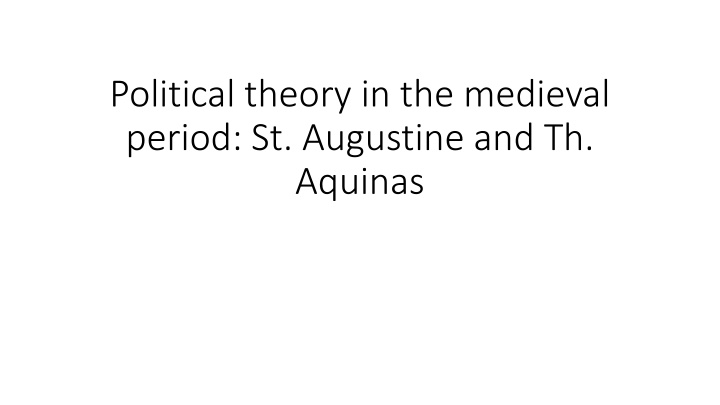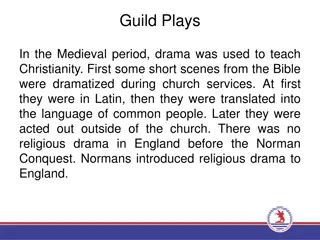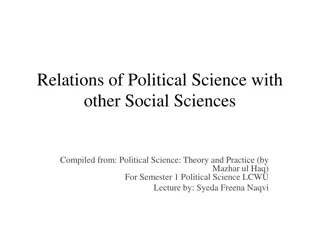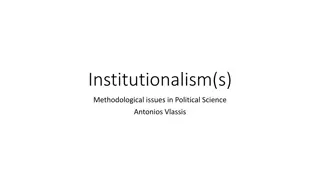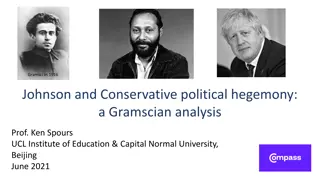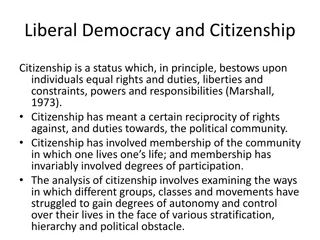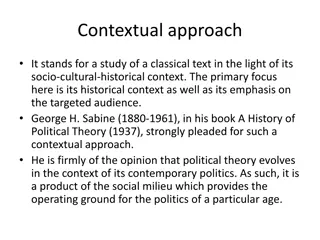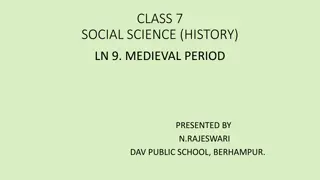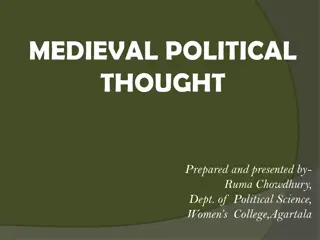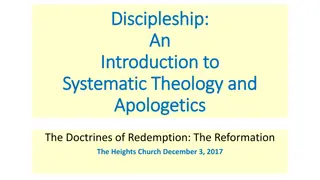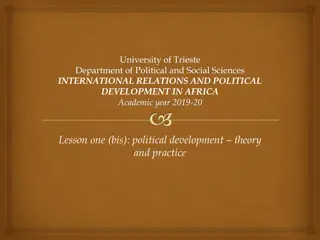Medieval Political Theory: St. Augustine & Th. Aquinas
Political theories of St. Augustine and Thomas Aquinas in the medieval period. Dive into the early medieval era, the rise of barbarian kingdoms, and the influence of Christianity, leading to the development of governance concepts. Learn about key philosophers such as St. Augustine and their major works like "The City of God." Understand the shift from tribal leadership to kingships and the impact of Christianity on the unification of people and church-state relations.
Download Presentation

Please find below an Image/Link to download the presentation.
The content on the website is provided AS IS for your information and personal use only. It may not be sold, licensed, or shared on other websites without obtaining consent from the author.If you encounter any issues during the download, it is possible that the publisher has removed the file from their server.
You are allowed to download the files provided on this website for personal or commercial use, subject to the condition that they are used lawfully. All files are the property of their respective owners.
The content on the website is provided AS IS for your information and personal use only. It may not be sold, licensed, or shared on other websites without obtaining consent from the author.
E N D
Presentation Transcript
Political theory in the medieval period: St. Augustine and Th. Aquinas
Early Medieval period 476 AD a new Patricio of Rome came from German tribes; Easter Roman empire Basileus agreed; This was a beginning of the middle Ages; Ancient artifacts were lost or destroyed; Some ancient cities were ruined; Barbarians adopted some laws of early civilizations; Latin language remained (school, church);
Early Medieval period Barbarian kingdoms (before mainly based on agriculture, less skilled in stone architecture); Family-tribe relations (Germans) developed to first communities; Communities evolved to slavery households (different one from ancient types), and then state-like units; Leaders cynings *** of the troop; Later for the tribe, 4-5 cc AD with the unification of rimes, they were leaders of the first kingships; Cynings started to live better and separately, and no longer elected***; other symbols of power appeared;
Medieval period Christianity: - Unification of people; - Church as a community and institution - 313 Constantine legalized Christianity followed by unification of royal and church powers; - 325: the first Gathering with the establishment of the Christian canonization of the cults; - Becomes a state religion; - Classic M. period starts from 5 c. AD
Philosophers St Augustine, the City of God Thomas Aquinas: Summa Theology
Saint Augustine: 354 Saint Augustine: 354 430 A. C. 430 A. C.
Saint Augustine Saint Augustine Born in North Africa 354 A.C. Converted: he became a Christian when he was 33 He was a bishop Major writings: The Confessions and The City of God
St. Augustine: The city of God The City of God vs the City of Man - Original sin - First settlement - Romulus - Inequality
Thomas Aquinas (1225 Thomas Aquinas (1225 1274) 1274)
Thomas Aquinas Thomas Aquinas on a state: On Ruling a) Influenced by Aristotle; b) Laws are the principles directed to a common wellbeing; c) 4 types of laws: 1. eternal a project of God, non-written; 2. natural exercised eternal law among humanity (marriage, children, etc.) 3. Human Positive feudal law, but not imposed by force; 4. Divine-positive Bible.
Thomas Aquinas Church and state: - Is church empowered to limit the power of a king? - 3 elements of state power: a) Concept (divine nature); b) Origins (might be taken illegally); c) Execution (might be abusive). - Autonomy of powers; - Interaction between powers; - Can a tyrant be assassinated? - Ideal state is: monarchy
